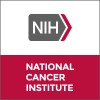
ONC206 for Treatment of Newly Diagnosed, or Recurrent Diffuse Midline Gliomas, and Other Recurrent...
Diffuse Midline Glioma (DMG)Glioblastoma6 moreThis phase I trial studies the effects and best dose of ONC206 alone or in combination with radiation therapy in treating patients with diffuse midline gliomas that is newly diagnosed or has come back (recurrent) or other recurrent primary malignant CNS tumors. ONC206 is a recently discovered compound that may stop cancer cells from growing. This drug has been shown in laboratory experiments to kill brain tumor cells by causing a so called "stress response" in tumor cells. This stress response causes cancer cells to die, but without affecting normal cells. ONC206 alone or in combination with radiation therapy may be effective in treating newly diagnosed or recurrent diffuse midline gliomas and other recurrent primary malignant CNS tumors.

Ensartinib in Treating Patients With Relapsed or Refractory Advanced Solid Tumors, Non-Hodgkin Lymphoma,...
Advanced Malignant Solid NeoplasmMalignant Solid Neoplasm31 moreThis phase II Pediatric MATCH trial studies how well ensartinib works in treating patients with solid tumors, non-Hodgkin lymphoma, or histiocytic disorders with ALK or ROS1 genomic alterations that have come back (recurrent) or does not respond to treatment (refractory) and may have spread from where it first started to nearby tissue, lymph nodes, or distant parts of the body (advanced). Ensartinib may stop the growth of tumor cells by blocking some of the enzymes needed for cell growth.

HER2-specific CAR T Cell Locoregional Immunotherapy for HER2-positive Recurrent/Refractory Pediatric...
Central Nervous System TumorPediatric8 moreThis is a Phase 1 study of central nervous system (CNS) locoregional adoptive therapy with autologous CD4 and CD8 T cells lentivirally transduced to express a HER2-specific chimeric antigen receptor (CAR) and EGFRt, delivered by an indwelling catheter in the tumor resection cavity or ventricular system in children and young adults with recurrent or refractory HER2-positive CNS tumors. A child or young adult with a refractory or recurrent CNS tumor will have their tumor tested for HER2 expression by immunohistochemistry (IHC) at their home institution or at Seattle Children's Hospital. If the tumor is HER2 positive and the patient meets all other eligibility criteria, including having a CNS catheter placed into the tumor resection cavity or into their ventricular system, and meets none of the exclusion criteria, then they can be apheresed, meaning T cells will be collected. The T cells will then be bioengineered into a second-generation CAR T cell that targets HER2-expressing tumor cells. The patient's newly engineered T cells will then be administered via the indwelling CNS catheter for two courses. In the first course they will receive a weekly dose of CAR T cells for three weeks, followed by a week off, an examination period, and then another course of weekly doses for three weeks. Following the two courses, patient's will undergo a series of studies including MRI to evaluate the effect of the CAR T cells and may have the opportunity to continue receiving additional courses of CAR T cells if the patient has not had adverse effects and if more of their T cells are available. The hypothesis is that an adequate amount of HER2-specific CAR T cells can be manufactured to complete two courses of treatment with three doses given on a weekly schedule followed by one week off in each course. The other hypothesis is that HER-specific CAR T cells safely can be administered through an indwelling CNS catheter to allow the T cells to directly interact with the tumor cells for each patient enrolled on the study safely can be delivered directly into the brain via indwelling catheter. Secondary aims of the study will include to evaluate CAR T cell distribution with the cerebrospinal fluid (CSF), the extent to which CAR T cells egress or traffic into the peripheral circulation or blood stream, and, if tissues samples from multiple time points are available, also evaluate the degree of HER2 expression at diagnosis versus at recurrence.

Safety and Dose Finding Study of Neratinib in Children and Young Adults With Cancer That Has Returned...
Solid TumorCentral Nervous System Tumor2 moreThe purpose of this study is to test the safety of neratinib at different dose levels and to find out what effects, good and bad, it has on the patients and the cancer.

Niraparib in Tumors Metastatic to the CNS
Metastatic CancerCentral Nervous System CancerThis research is being done to see how effective the drug niraparib is against cancer that has metastasized to the central nervous system (CNS). This research study involves the study drug niraparib.

Study of B7-H3-Specific CAR T Cell Locoregional Immunotherapy for Diffuse Intrinsic Pontine Glioma/Diffuse...
Central Nervous System TumorDiffuse Intrinsic Pontine Glioma11 moreThis is a Phase 1 study of central nervous system (CNS) locoregional adoptive therapy with autologous CD4+ and CD8+ T cells lentivirally transduced to express a B7H3-specific chimeric antigen receptor (CAR) and EGFRt. CAR T cells are delivered via an indwelling catheter into the tumor resection cavity or ventricular system in children and young adults with diffuse intrinsic pontine glioma (DIPG), diffuse midline glioma (DMG), and recurrent or refractory CNS tumors. A child or young adult meeting all eligibility criteria, including having a CNS catheter placed into the tumor resection cavity or into their ventricular system, and meeting none of the exclusion criteria, will have their T cells collected. The T cells will then be bioengineered into a second-generation CAR T cell that targets B7H3-expressing tumor cells. Patients will be assigned to one of 3 treatment arms based on location or type of their tumor. Patients with supratentorial tumors will be assigned to Arm A, and will receive their treatment into the tumor cavity. Patients with either infratentorial or metastatic/leptomeningeal tumors will be assigned to Arm B, and will have their treatment delivered into the ventricular system. The first 3 patients enrolled onto the study must be at least 15 years of age and assigned to Arm A or Arm B. Patients with DIPG will be assigned to Arm C and have their treatment delivered into the ventricular system. The patient's newly engineered T cells will be administered via the indwelling catheter for two courses. In the first course patients in Arms A and B will receive a weekly dose of CAR T cells for three weeks, followed by a week off, an examination period, and then another course of weekly doses for three weeks. Patients in Arm C will receive a dose of CAR T cells every other week for 3 weeks, followed by a week off, an examination period, and then dosing every other week for 3 weeks. Following the two courses, patients in all Arms will undergo a series of studies including MRI to evaluate the effect of the CAR T cells and may have the opportunity to continue receiving additional courses of CAR T cells if the patient has not had adverse effects and if more of their T cells are available. The hypothesis is that an adequate amount of B7H3-specific CAR T cells can be manufactured to complete two courses of treatment with 3 or 2 doses given on a weekly schedule followed by one week off in each course. The other hypothesis is that B7H3-specific CAR T cells can safely be administered through an indwelling CNS catheter or delivered directly into the brain via indwelling catheter to allow the T cells to directly interact with the tumor cells for each patient enrolled on the study. Secondary aims of the study will include evaluating CAR T cell distribution with the cerebrospinal fluid (CSF), the extent to which CAR T cells egress or traffic into the peripheral circulation or blood stream, and, if tissues samples from multiple timepoints are available, also evaluate disease response to B7-H3 CAR T cell locoregional therapy.

OH2 Oncolytic Viral Therapy in Central Nervous System Tumors
Central Nervous System TumorsIn the first phase, it mainly explores the safety, tolerability and preliminary effectiveness of two doses of OH2 injection in the treatment of patients with recurrent central nervous system tumors; to evaluate the biodistribution and virus shedding of OH2 injection administered in the tumor cavity; to evaluate the level of anti-HSV2 antibody in patients when OH2 injection is administered intracavitary to tumor; to determine the phase II recommended dose (RP2D) of OH2 injection in the treatment of recurrent glioblastoma. Phase IIa, to evaluate the preliminary efficacy of OH2 injection in the treatment of patients with recurrent glioblastoma after surgery, and to further evaluate the safety of OH2 in the treatment of relapsed glioblastoma.

Study of Avelumab in Combination With Lenvatinib for Children With Primary CNS Tumors
Central Nervous System TumorsThis study consists of 2 parts: Dose Escalation Part 1 and Dose Expansion Part 2. The Dose Escalation Part 1 will evaluate the safety and tolerability of Avelumab in combination with Lenvatinib and determine the recommended Avelumab and Lenvatinib dose for expansion. Dose Expansion Part 2 will assess the efficacy of Avelumab in combination with Lenvatinib by Progression-free Survival in participants with pre-defined primary central nervous system (CNS) tumors.

Radiation Therapy With Concomitant and Adjuvant Temozolomide Versus Radiation Therapy With Adjuvant...
Brain and Central Nervous System TumorsRadiation therapy uses high-energy x-rays to kill tumor cells. Drugs used in chemotherapy, such as temozolomide, work in different ways to stop the growth of tumor cells, either by killing the cells or by stopping them from dividing. It is not yet known whether giving radiation with concomitant and adjuvant temozolomide versus radiation with adjuvant PCV is more effective in treating anaplastic glioma or low grade glioma.

A Phase 2 Study of ICP-723 in Patients With Advanced Solid Tumors or Primary Central Nervous System...
Advanced Solid Tumors Harboring NTRK FusionPrimary Central Nervous System Tumors Harboring NTRK FusionA Multi-center, Non-Randomized, Open-Label Phase 2 Basket Clinical Trial to Evaluate ICP-723 in Patients with Advanced Solid Tumors or Primary Central Nervous System Tumors
